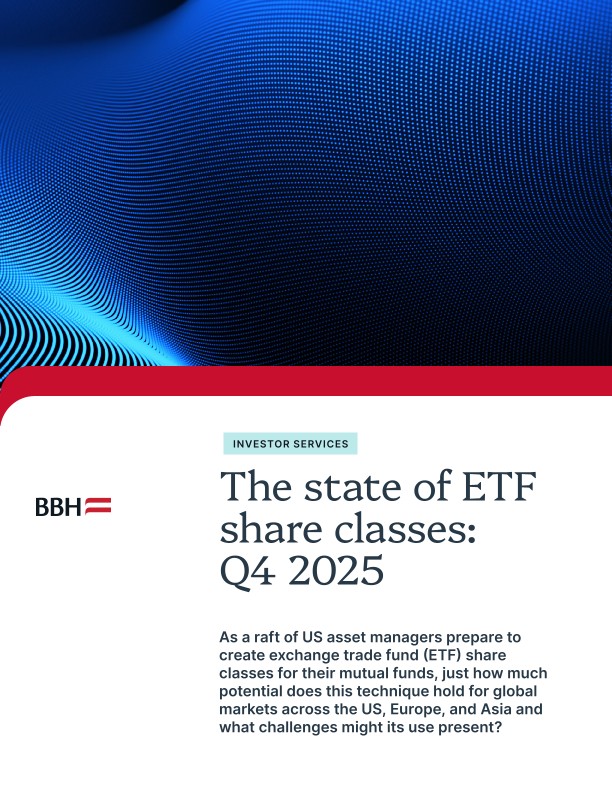This fall saw the US Securities and Exchange Commission (SEC) announce a landmark decision that should clear the way for fund managers to offer exchange-traded fund share classes within existing mutual funds.
By indicating it would grant Texas-based investment firm Dimensional Fund Advisors the right to add ETF share classes to its mutual funds1 the SEC decision broke a long-running market impasse. Its decision could trigger the creation of a wave of new ETF share classes of mutual funds.
Following this signal of approval, over 60 sponsors (of the 80 original filings) have now re-filed ETF share class relief applications with the SEC2. Previously, only one investment manager, Vanguard, had been able to create ETF share classes from its mutual funds via a unique patent which lapsed in 2023.
The multi-share class approach is not just a US phenomenon. It has long attracted interest at a global level. In fact, BBH has supported multi-share class outside of the US for many years.
In Europe – and to some extent in Asia – there continues to be significant interest among asset managers looking at ETFs as a means of expanding their distribution audience and capturing asset growth opportunities via the UCITS fund vehicle. Indeed, hybrid models, otherwise known as unlisted and listed share classes, have become a popular ETF entry point.
For further details on what this means for global markets, jump to our spotlight on Europe and Asia.
Under the latest US changes, could creating ETF share classes from existing mutual funds become a more viable alternative?
Why now?
Dramatic growth in ETF markets has encouraged many asset managers to consider ways of engineering and refashioning their mutual fund ranges to provide the benefits of ETFs. Since the first mutual fund to ETF conversion in 2021, conversions have become an increasingly popular approach.
Yet the conversion process can be challenging. In some cases, it presents constraints and complexities for distribution, necessitating brokerage accounts for all investors.
The potential benefits of ETF share classes in the US
For investors, permitting a fund to offer both mutual fund and ETF share classes more widely could:
- Promote tax efficiency
- Foster a more competitive marketplace
- Allow providers to bring lower fees and real-time trading to clients while offering greater portfolio flexibility
- Expand investor choice through the development of new products
For sponsors, ETF share classes provide the ability to:
- Demonstrate a longer performance history and track record
- Expand tax efficiency across a broader group of investors
- Optimize ETF baskets for liquidity
- Increase investor access to their investment strategies
- Harness economies of scale
Technical details and contracts between structures
The SEC remains particularly focused on ensuring equitable treatment of investors across all share classes in this novel structure, specifically related to cross-subsidization of expenses and the overall tax impact to investors in a shared pool of portfolio assets.
Because most individual investors are buying and selling ETF shares with each other through the secondary market, ETFs have a mechanism to shield them from a high volume of direct portfolio transactions. Unlike mutual funds, most ETFs can also reduce or eliminate the possibility of capital gains distributions through the ‘in-kind’ delivery of securities – the mechanism for creating or redeeming ETF shares directly with the fund, often referred to as the primary market.
The in-kind process limits trading costs associated with portfolio management, and further, any costs associated with cash trading are typically reimbursed by an Authorized Participant. This is in direct contrast to the portfolio management process that requires cash trading in a mutual fund, where trading costs and taxes are inherent to the structure and shared by end investors.
Finally, ETFs are primarily fully invested while mutual fund managers typically reserve an allocation of cash to support efficient portfolio management and fund redemptions. This potential ‘cash drag’ on performance introduces a unique variable to the ETF in a multi-share class structure.


